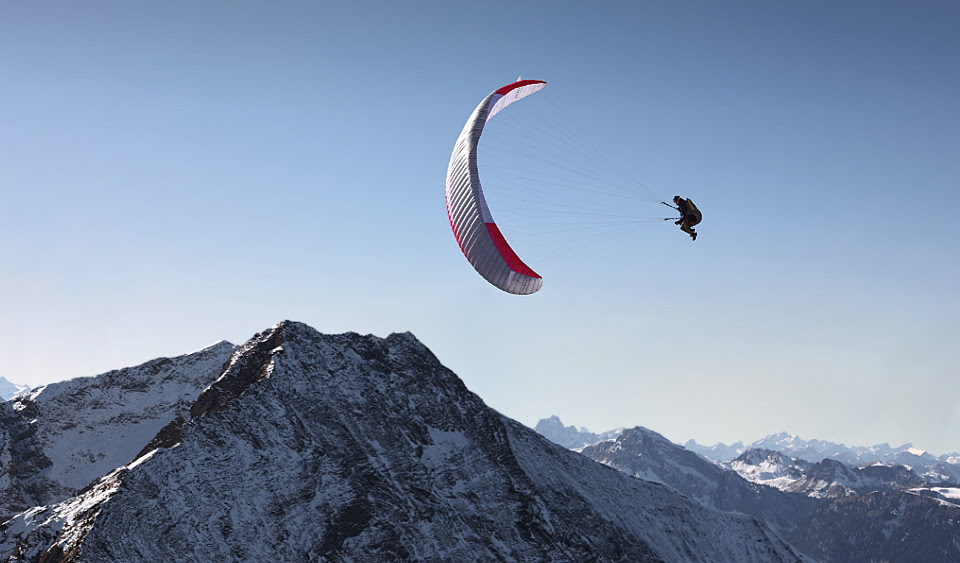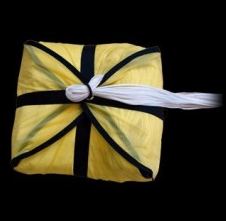Advance IOTA DLS
The Advance IOTA 3 becomes the Advance IOTA DLS. Advance have been using their extra time to further develop the performance, handling and weight of our top-end B wing, achieving a new level of excellence in all three of these qualities. Welcome to the new IOTA DLS. The DLS stands for DURABLE LIGHTWEIGHT STRUCTURE and signals the start of a new development philosophy combining structural innovation with a unique mix of materials.
WHAT IS THE IOTA DLS LIKE TO FLY?
The basic flying concept for the new Asvance IOTA DLS comes from the extremely successful and high performing SIGMA 11. The profile characteristics of this big brother have been adopted, adjusted to meet the requirements of the high B class. A marked Advance IOTA DLS performance step up is the result. The effective Pitch-Control-System gives a flying feel similar to a two-liner. An element of C level control inputs to the B level, thus maintaining profile shape when C-controlling while accelerated.
The extreme flight behaviour and passive safety of the new Advance IOTA DLS have been greatly improved compared to its predecessor. Ideal tuning of lift distribution with fabric tension much improves turbulence absorption, without losing important pilot feedback from air mass effects. An agreeable sense of comfort in flight enables you to enjoy relaxed and fatigue-free flying over long distances.
Quality technical design does away with IOTA DLS upper C-wires, making the IOTA DLS even easier and more compact to pack – after flight.
WHY DOES THE IOTA 3 BECOME THE Advance IOTA DLS?
Although pilots and dealers like products to be as light as possible, their feedback tells us that they are becoming increasingly reluctant to accept the degree of compromise in robustness and glider life that can go with light gliders. This demand has taken its time to become evident because pilots only become aware of the weaknesses of ultra-light products after using them for a while. Unless given special care, ultra-light gliders can suffer subtle but permanent airfoil deformation which may have a lasting effect on flight behaviour and performance. Porosity of lightweight fabrics might also become an issue associated with intensive use.
So we decided to confront this problem with our DLS concept, and develop a product that meets this wide spectrum of demands. Our many years experience of developing X-Alps equipment has helped us with this set of subjects. Computer-aided analysis enabled us to focus, in great detail, on those areas of a paraglider which are exposed to high stress, and therefore deserve specific attention. This allows us to selectively decide on the mix of lightweight and conventional materials to use, but, above all, design the best geometric shapes of individual components such as diagonals, tension bands or rib crossports in an economic way that also eliminates weaknesses in durability and robustness.
IS THE IOTA DLS NOT JUST AN IOTA 3 WITH A LIGHT UNDERSURFACE?
No: the 27gm fabric for the wing undersurface only saves around 100 gms, depending on glider size. Total weight saving subtracts more than four times this figure. Because the IOTA DLS is up to 600 g lighter than its predecessor.
The sum of many small but important details means that the new IOTA DLS is a lightweight glider. Nevertheless, components that are important for durability, such as the ribs, are made of particularly low-stretch materials. The DLS difference comes from an intelligent material mix, fabric weight saving at less stressed areas, a re-analysis of sliced diagonal shapes, geometrically optimized tension straps and, last but not least, the softlinks option.
WILL THERE BE ANOTHER LIGHTER HIGH-B FROM ADVANCE?
With a weight starting at 3.9 kg, the IOTA DLS can be assigned to the light glider category. Due to the new positioning of the IOTA DLS, no further High-B glider is currently planned as a light version
TECHNICAL DATA
| IOTA DLS |
21 |
23 |
25 |
27 |
29 |
| Flat surface |
m2 |
21.78 |
23.48 |
25.18 |
27.23 |
29.24 |
| Projected surface |
m2 |
18.57 |
19.94 |
21.39 |
23.13 |
24.83 |
| Certified takeoff weight |
kg |
60-77 |
70-88 |
80-100 |
92-114 |
105-128 |
| Ideal weight range |
kg |
65-75 |
75-85 |
85-97 |
97-110 |
110-125 |
| Glider weight |
kg |
3.9 |
4.1 |
4.3 |
4.6 |
4.9 |
| Span |
m |
11.05 |
11.47 |
11.88 |
12.35 |
12.80 |
| Projected span |
m |
8.80 |
9.10 |
9.42 |
9.80 |
10.15 |
| Aspect ratio |
5.6 |
5.6 |
5.6 |
5.6 |
5.6 |
| Projected aspect ratio |
4.15 |
4.15 |
4.15 |
4.15 |
4.15 |
| Number of cells |
59 |
59 |
59 |
59 |
59 |
| Certification |
EN/LTF B |
EN/LTF B |
EN/LTF B |
EN/LTF B |
EN/LTF B |





